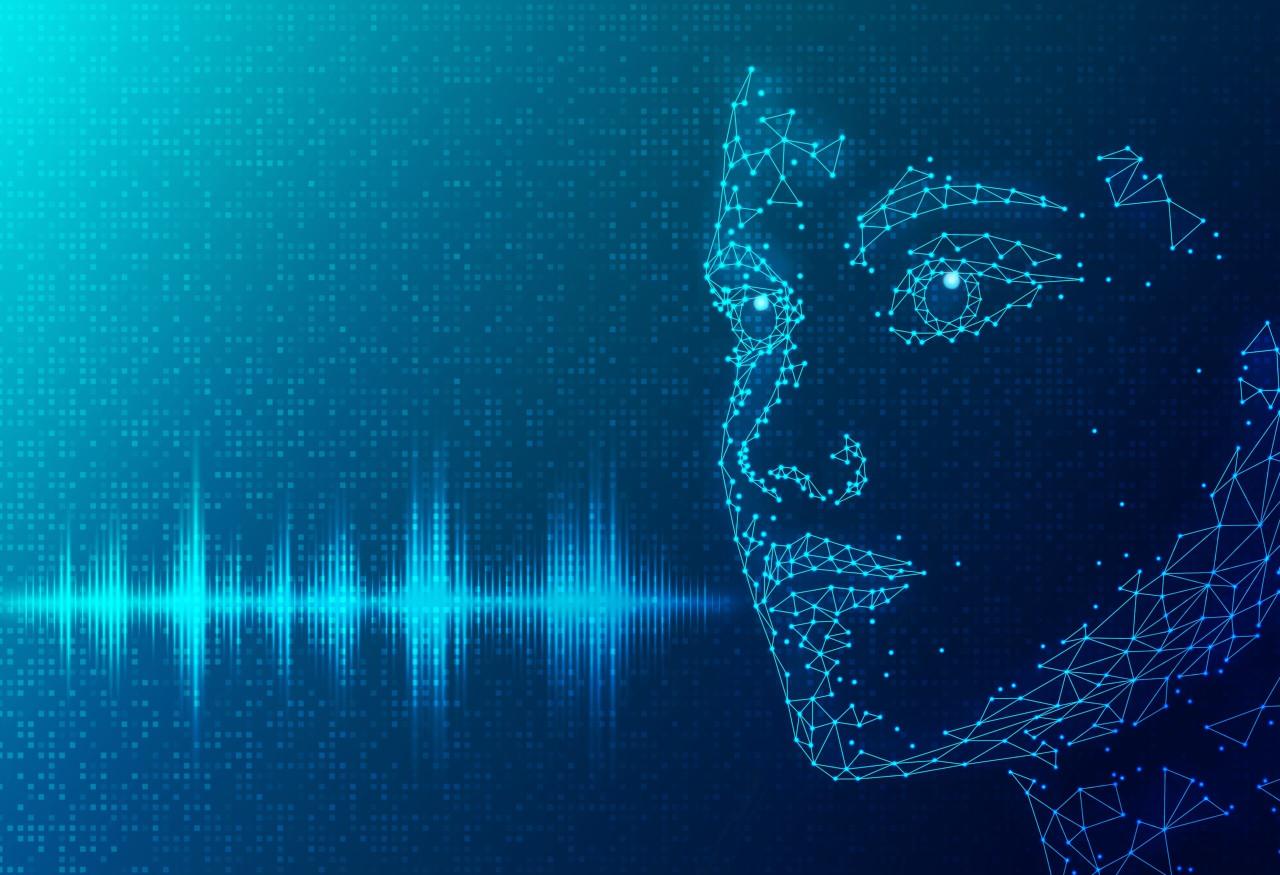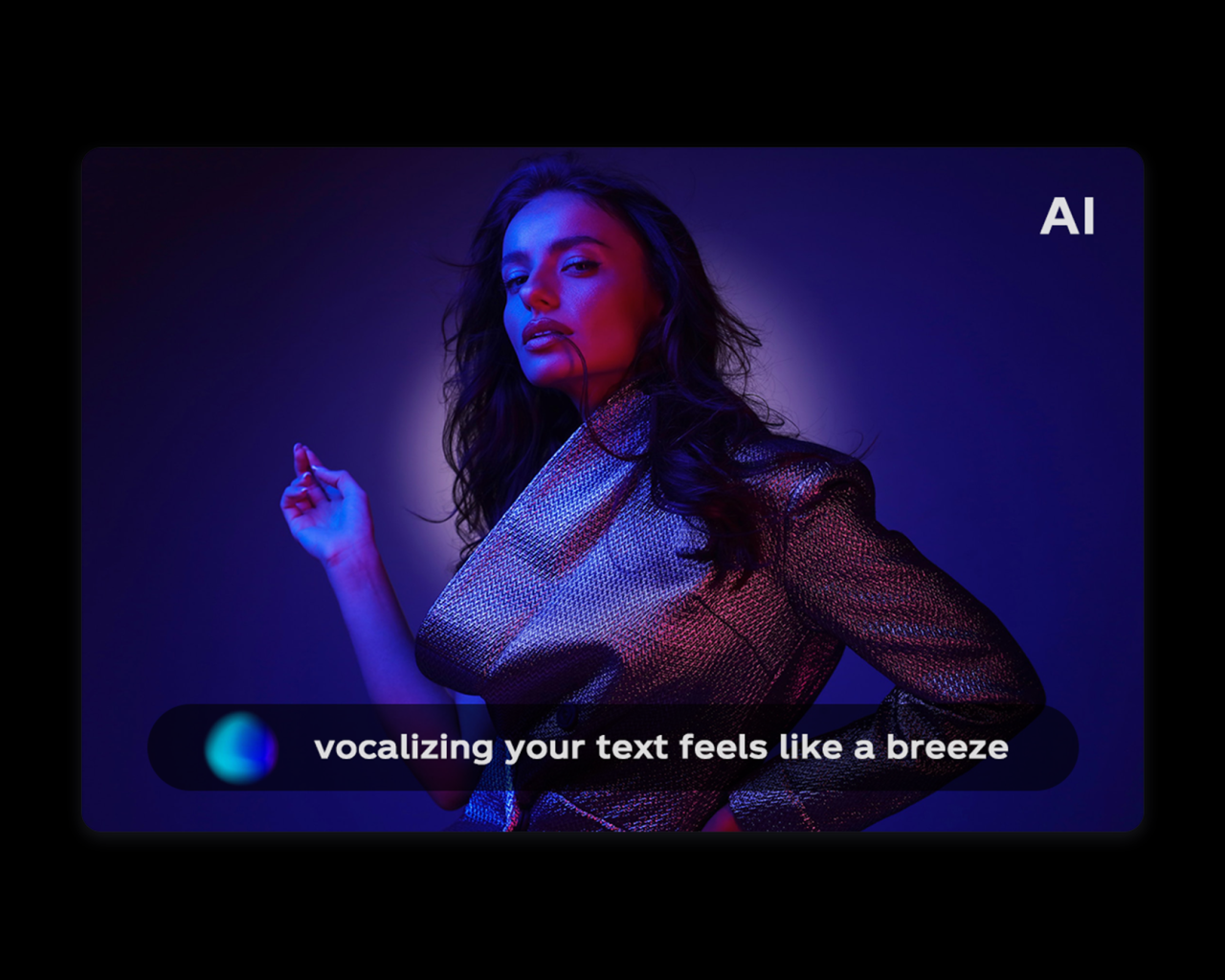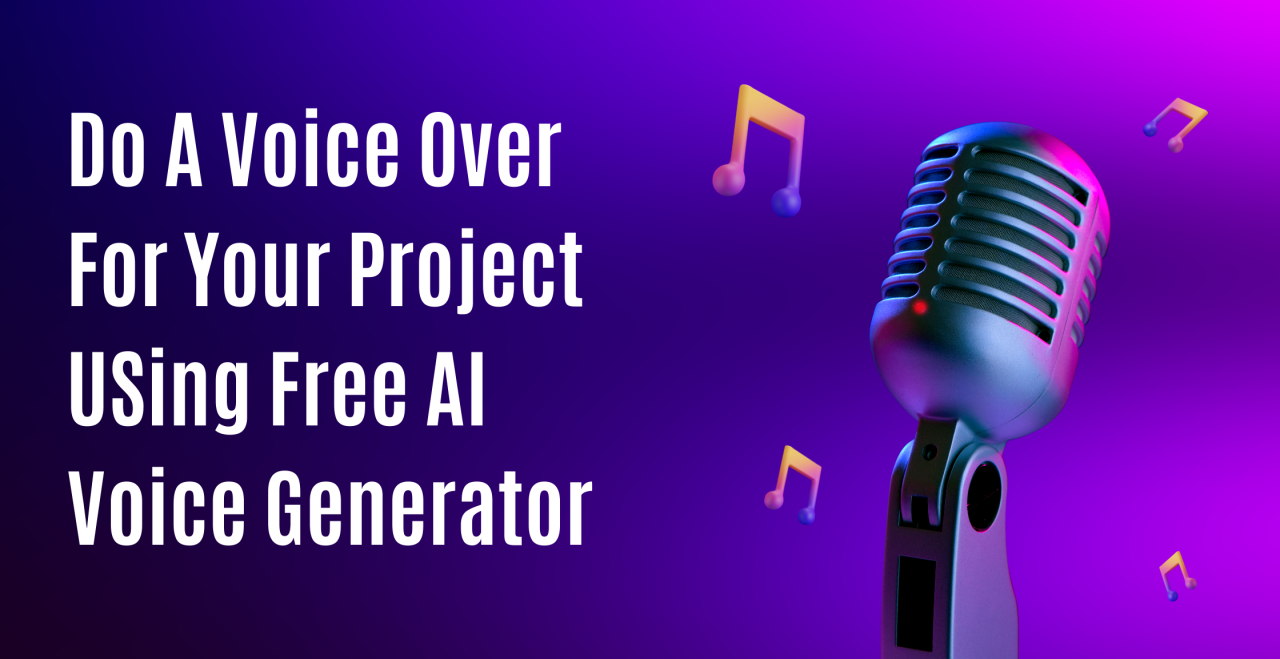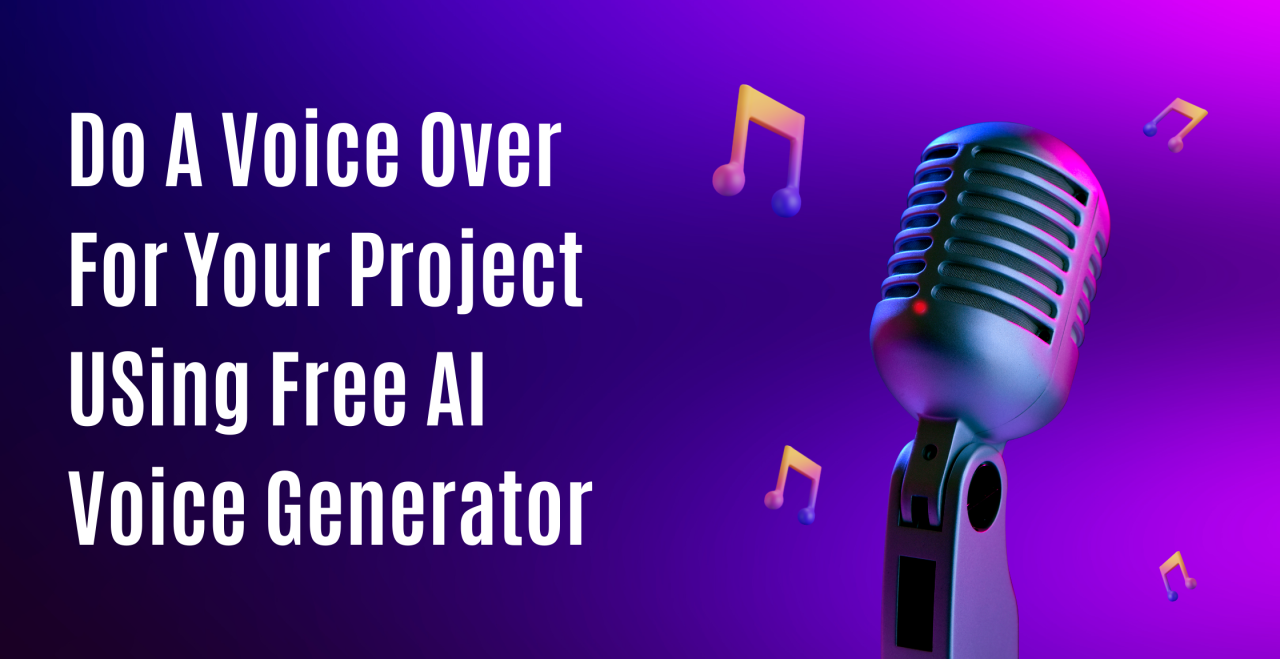AI voice generators are revolutionizing how we interact with technology and create audio content. From realistic-sounding audiobooks to accessible screen readers, these tools leverage cutting-edge AI to transform text into speech with impressive accuracy and naturalness. This exploration will delve into the technology behind these generators, their diverse applications, and the ethical considerations surrounding their use.
We’ll examine different types of AI voice generators, comparing text-to-speech (TTS) and speech synthesis methods. We’ll also discuss the technical aspects, including deep learning algorithms and the challenges of creating truly natural-sounding speech. Finally, we’ll look at the exciting applications across various industries, from entertainment and accessibility to business and beyond, while also considering the ethical implications of this rapidly advancing technology.
AI Voice Generators: A Deep Dive
AI voice generators are transforming how we interact with technology and each other. From creating realistic audiobooks to powering virtual assistants, their applications are vast and rapidly expanding. This article explores the different types, technical aspects, applications, ethical considerations, and future trends of this exciting technology.
Types of AI Voice Generators

AI voice generators broadly fall under the umbrella of speech synthesis, but there are important distinctions to make. We’ll categorize them based on technology, target audience, and voice styles.
Text-to-Speech (TTS) vs. Speech Synthesis: While often used interchangeably, TTS typically focuses on converting written text directly into speech, often with simpler algorithms. Speech synthesis, on the other hand, encompasses a broader range of techniques, including sophisticated deep learning models, capable of producing more natural and expressive speech.
Categorization by Target Audience: AI voice generators cater to diverse needs. Professional voiceovers require high-quality, natural-sounding voices with extensive customization options. Gaming utilizes voices for characters and non-player characters (NPCs), prioritizing expressiveness and emotional range. Accessibility solutions, such as screen readers, focus on clear and understandable speech for users with visual impairments.
Voice Styles and Tones: The range of available voice styles is extensive, encompassing everything from calm and reassuring to energetic and enthusiastic. Many generators offer options to adjust parameters like pitch, speed, and intonation, providing fine-grained control over the final output. Some even allow for mimicking specific voices or accents, though ethical considerations around this are crucial.
AI voice generators are pretty cool, right? They can be used for all sorts of things, from creating audiobooks to providing accessibility features. If you’re interested in a career using technology in a hands-on way, check out surgical tech programs near me with financial aid options to see if it’s a good fit for you.
Then, maybe you can use an AI voice generator to narrate your training videos later!
| AI Voice Generator | Naturalness | Customization | Price |
|---|---|---|---|
| Synthesia | High | High | Subscription-based |
| Murf.ai | High | Medium | Subscription-based |
| Descript | Medium | High | Subscription-based |
Technical Aspects of AI Voice Generation
The process of converting text to speech involves several complex steps. Deep learning plays a vital role in achieving realistic sound.
Text-to-Speech Process: This generally involves text preprocessing (cleaning and formatting), phonetic transcription (converting text to phonetic symbols), and finally, speech synthesis (generating audio waveforms from phonetic representation).
Deep Learning and Neural Networks: Deep learning models, specifically recurrent neural networks (RNNs) and convolutional neural networks (CNNs), are instrumental in generating realistic-sounding voices. These models learn intricate patterns in vast datasets of speech, allowing them to produce speech that mimics human vocalizations accurately.
Voice Modulation and Intonation Control: Algorithms like WaveNet and Tacotron utilize sophisticated techniques to control various aspects of speech, such as pitch, intonation, and stress. This enables the creation of expressive and nuanced speech patterns.
Challenges in Natural Pauses and Prosody: Creating natural-sounding pauses and prosody (the rhythm and melody of speech) remains a significant challenge. While advancements have been made, perfectly replicating the subtle nuances of human speech remains an ongoing area of research.
Applications and Use Cases, Ai voice generator

AI voice generators are revolutionizing various industries by automating tasks and enhancing user experiences.
Entertainment Industry: Audiobooks, video games, and animated films all benefit from the use of AI-generated voices. They allow for the creation of diverse characters and efficient production workflows.
Accessibility: Screen readers and text-to-speech software improve accessibility for visually impaired individuals, providing a crucial tool for accessing information and interacting with technology.
Business Applications: Automated customer service, interactive voice response (IVR) systems, and personalized voice assistants are all powered by AI voice generation, improving efficiency and user experience.
- Customer service
- Education
- Healthcare
- Marketing and advertising
Ethical Considerations and Future Trends
The powerful capabilities of AI voice generators raise important ethical considerations and highlight the need for responsible development.
Misuse and Deepfakes: The potential for misuse in creating deepfakes and spreading misinformation is a significant concern. Techniques to detect and mitigate these risks are crucial.
Bias and Representation: Biases present in training data can lead to AI-generated voices that perpetuate stereotypes or underrepresent certain demographics. Addressing these biases is essential for ensuring fair and equitable representation.
Ongoing Research and Development: Research continues to focus on improving the realism, naturalness, and emotional expressiveness of AI-generated voices. Advancements in areas like emotional speech synthesis are promising.
Future Impacts: Advancements in AI voice generation could transform industries like education, healthcare, and customer service, leading to more personalized and efficient interactions.
Illustrative Examples
Let’s consider a specific AI voice, “Alex,” from a hypothetical generator. Alex possesses a warm, friendly tone with a clear and articulate pronunciation. Its pitch range is moderate, and intonation is generally natural, though occasionally slightly monotonous in longer passages. While it lacks the subtle nuances of a human voice, its clarity and consistency make it suitable for many applications.
Imagine a scene in a futuristic video game. A friendly AI companion, voiced by an AI voice generator, guides the player through a challenging level. The AI’s voice, calm and reassuring, provides instructions and encouragement, creating a more immersive and engaging gaming experience. The emotional impact is significant, as the AI’s tone conveys empathy and support, enhancing the player’s emotional connection with the game.
Outcome Summary

AI voice generators represent a significant leap forward in audio technology, offering incredible potential across numerous sectors. While challenges remain, particularly regarding ethical concerns and the ongoing pursuit of perfect naturalness, the future of AI voice generation is bright. As the technology continues to evolve, we can expect even more sophisticated and versatile applications that will further transform how we communicate and consume audio content.
The possibilities are truly vast and exciting.
AI voice generators are awesome for creating realistic-sounding narration, but have you ever wondered about the financial side of tech? Check out this list of Who are Canada’s top-earning CEOs and how much do they make? to see how much some leaders earn. Knowing these salaries can help you understand the market value of skills needed to develop and market cutting-edge AI tech like voice generators.
Popular Questions: Ai Voice Generator
How much do AI voice generators cost?
AI voice generators are pretty cool, right? You can use them to create all sorts of audio content, from podcasts to audiobooks. Imagine using one to narrate a documentary about young sporting stars, like Luke Littler: the mind and the making of darts’ youngest world , making the story even more accessible. Then you could use the AI to generate different voice styles for interviews with his coaches and family, adding extra depth to the production.
Prices vary widely depending on features and usage. Some offer free plans with limitations, while others charge subscription fees or per-audio-generated fees.
Are AI-generated voices easily detectable?
Advanced AI voice generators produce increasingly realistic voices, making detection challenging. However, subtle nuances might still be noticeable to a trained ear.
What are the legal implications of using AI voice generators?
Legal considerations vary depending on usage. Issues like copyright, impersonation, and consent must be carefully considered to avoid legal issues.
Can I use an AI voice generator for commercial purposes?
Most AI voice generators offer commercial licenses, but terms and conditions vary. Check the specific provider’s licensing agreements.
